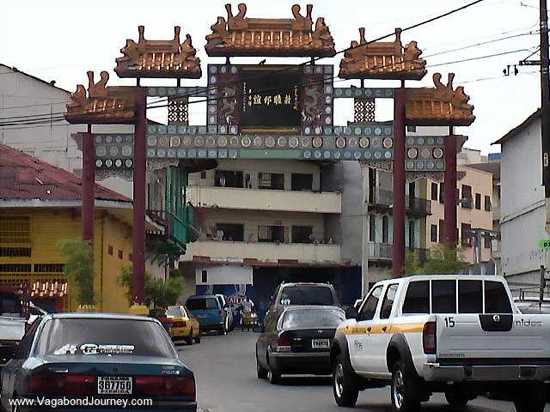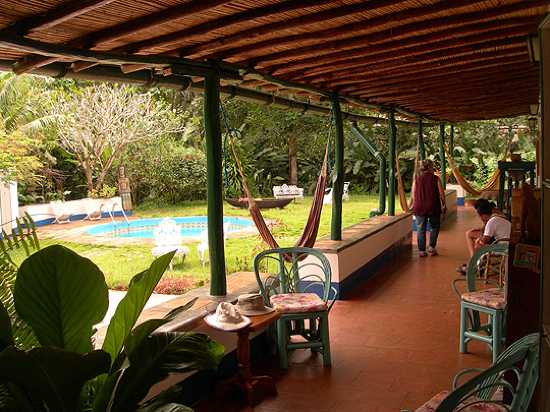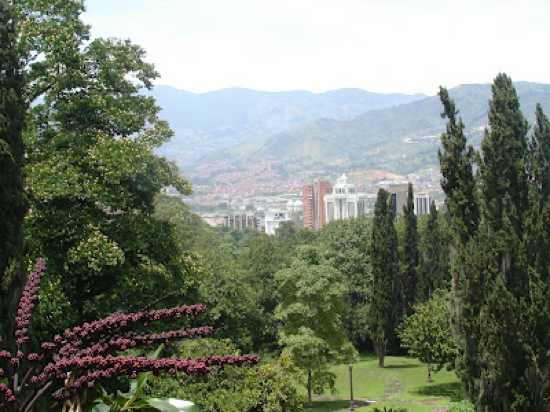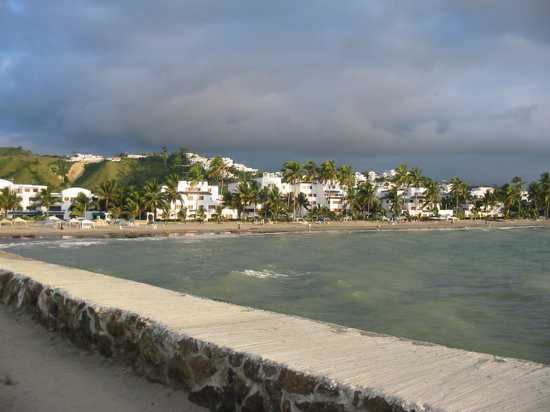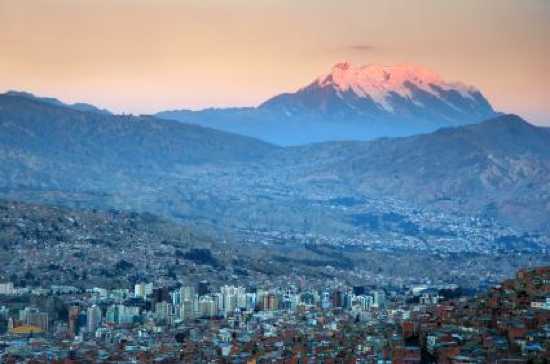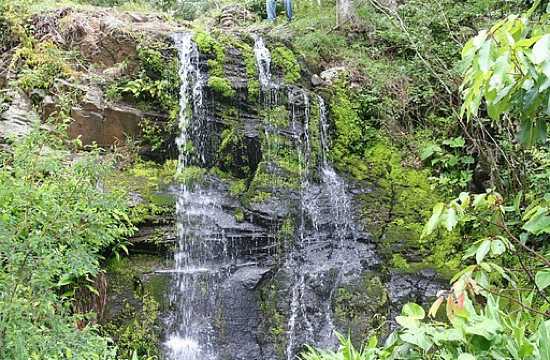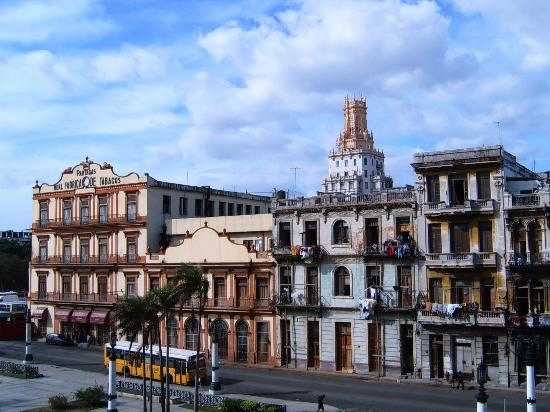NOTE: The extreme gap between rich and poor in Latin America has created pockets of high crime in some of the following destinations. I am an American and have never had the slightest problem. However, one should always use common sense and read up on areas to avoid when planning a holiday abroad.
One may be surprised to learn that the oldest Chinatown in the western hemisphere isn’t in San Francisco or New York. In fact, some 20% of Panama’s diverse population is of Chinese heritage. Located in the colonial San Felipe district of Panama City, Barrio Chino is home to an array of Chinese eateries and markets. It may not be the biggest Chinatown in the world, but it’s an especially offbeat and interesting place. Shop for exotic spices in its neon-bathed alleyways and sample Chinese-Panamenian fare at the greasy spoon of your choice. It’s definitely worth a day’s exploration while visiting this fascinating and dynamic city.
Medellin may conjure memories of Colombia’s shockingly violent drug wars. Notorious cocaine kingpin Pablo Escobar called the city home, and in 1991 alone there were over 6,000 murders here. Things couldn’t be more different today. Medellin is a beautiful and much safer city nestled between sheer mountains. There are several major universities, meaning that Medellin is perfect for the hip, young travelers seeking a pub crawl. Check out the new Metrocable connecting the hillside “barrios” with the city center for some spectacular views. Many older visitors find its museums appealing, particularly the Museo de Antioquia, which displays works of Medellin’s most famous artist, Fernando Botero.
Though it’s home to the driest place on earth, Chile’s fertile river valleys enjoy the perfect climate for growing wine grapes. There are many such valleys throughout the central portion of the country, each offering its own special variety of wines. The closest, and most easily accessible, to the capital of Santiago is the Valle del Maipo. This valley is best known for its cabernets and merlots. Most, if not all, of the local vineyards offer tours. Some also offer accommodation, though prices tend to be considerably higher for the more luxurious. Still, it’s a price many consider to be well worth the expense. Valle del Maipo’s central location make it an excellent point of departure for exploring more of Chile’s wine country as well.
Long before his image graced the t-shirts of disaffected youth and hipsters everywhere, Che Guevara was inspiring leftist revolutions across Latin America. This didn’t sit well with either the traditional Latin American elite or the power brokers in Washington. It was in Bolivia that Che was tracked down and killed in 1967. Today visitors can trace his final route, across one of the most beautiful countries on earth. Start in the low-lying city of Santa Cruz, where Che passed through on his way to the capital of La Paz. From there make your way to the mountain town of Samaipata, where Che’s guerrilla band once attacked an army post. La Higuera is the small, remote village where he was eventually caught. You may visit the wooded canyon where Che was cornered by the Bolivian army, the schoolhouse where he died from his wounds, and the small hospital where his body was taken. Regardless of your opinion of the man, it’s a marvelous way to see the country.
Two hours north of Nicaragua’s bustling capital of Managua, there is a small city in the highlands which had previously been a hotbed of guerrilla activity during the Sandinista revolution. Esteli remains a very politically engaged town, despite its relatively small size, though you’d never know it in the peace and tranquility of the mountains nearby. You won’t find any Internet, ATMs or Holiday Inns here, and you’ll be glad. Some of the finest coffee in the world comes from these mountains, and it’s a perfect place to get away from it all. There are a number of small plantations where you can stay at a very low cost, or even volunteer. Primitive accommodations can be expected. Ride horses or hike in the mountains and nap in a hammock to the calls of tropical birds. Good luck on that whole “leaving” thing.
There was once a time when the larger-than-life titan of 20th Century literature walked (and, more often than not, stumbled) through Old Havana, having spent more than twenty years living in Cuba. His favorite haunts have since become well-known landmarks in the city, which has changed very little since his death in 1961. His room at the Hotel Ambos Mundos has been preserved as he left it, typewriter included. La Floridita bar is within staggering distance, a place Papa once described as a den of wild and motley drinkers of varying origins. A short drive from town is his old home at Finca Vigia (now a museum), which once housed both Hemingway and his veritable menagerie of pets. And of course, you have to spend some quality time fishing while you’re there.
Mexico is a vast country, encompassing many diverse cultures and culinary traditions. Sadly, most Mexican restaurants outside Mexico offer a very limited selection, usually drenched in cheese and red gravy. Head to the Valle Central for a more rewarding food travel experience. You can start in Mexico City, considered by many to be the premier destination for gastronomy in North America. You can have your pick from 5-star gourmet restaurants to (my favorite) “tacos al pastor” in the streets. From there you can head to historic Puebla, famous for its “mole,” “chiles en nogales” and lamb-filled “tacos arabes.” End your tour with amazing Afro-Carribbean inspired shellfish dishes in the port city of Veracruz, also home to nice beaches and charming colonial architecture.
Even if dancing isn’t your game, it’s difficult to imagine Buenos Aires without thinking of the tango. The tango was first made popular among the city’s blue-collar Italian, French and Spanish immigrant communities, and has since become a national treasure. Buenos Aires is filled with clubs where tourists can take lessons and watch professional dancers. The best option, however, is to head to the “milongas” around midnight. Make sure you enjoy a hearty steak dinner beforehand to power you through the night. The locals who frequent the milongas will be all too happy to show you the ropes. Class prices vary depending on the reputation of the instructors, should you choose a more regimented program. You may find yourself dancing your holiday away.
Few images are so iconic of Brazil as those conjured by its outrageous Carnaval season. Its origins lie in pagan rituals adapted to Christianity, a celebration of excess prior to the self-denial of Lent. Salvador, with its charming pastel colonial architecture and strong African influence, is host to the largest Carnaval in the world. Every February the city comes alive with parades, music and dancers in over-the-top costumes. Americans might draw comparisons to Mardi Gras in New Orleans. Some two million revellers fill the streets each year, to deafening Reggae, Samba and Reggaeton music. It’s a full sensory assault, and indeed it may be too overwhelming for some. But if you can take it, you’re guaranteed an experience to carry with you for the rest of your life.
